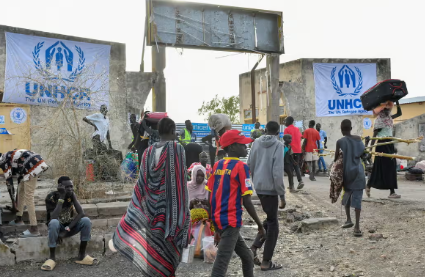UN Warns of Worsening Food Insecurity in 22 Countries
A new United Nations report warns of worsening acute food insecurity in 22 countries and territories. This projection covers the period from November 2024 to May 2025. The report was released by the Food and Agriculture Organization (FAO) and the World Food Programme (WFP) on October 31, 2024. Key countries affected include Nigeria, Sudan, Yemen, Ethiopia, and Haiti.
Countries Affected
The report identifies 14 countries and two regional clusters facing critical food insecurity. The specific countries are Nigeria, Sudan, Yemen, Ethiopia, Myanmar, Syrian Arab Republic, South Sudan, Zimbabwe, Zambia, Malawi, Haiti, Somalia, Chad, Niger, Mozambique, Burkina Faso, Palestine (Gaza Strip), Kenya, Mali, Lebanon, Namibia, Lesotho.
Ongoing conflict and armed violence are the primary drivers of hunger. These factors disrupt food systems, displace communities, and hinder humanitarian efforts. Specific regions like Sudan, Palestine, and South Sudan are on the highest alert for famine risks.
Current Hotspots
The report marks severe situations in the Zamzam camp in North Darfur and the Gaza Strip. Haiti, Mali, and South Sudan also face critical food insecurity. New additions to the hunger hotspots list include Kenya, Lesotho, and Namibia.
In the Central Sahel region, violence from non-state armed groups is escalating. Northern Mali and Burkina Faso are experiencing severe food insecurity due to violence and access restrictions. Chad faces challenges from conflict and a refugee influx from Sudan. Northern Nigeria’s security situation is also deteriorating.
Regional Impacts
In Southern Africa, conflict in northern Mozambique is expected to worsen food insecurity. Myanmar is also facing economic turmoil due to ongoing violence. In Latin America, rising violence in Haiti is pushing displaced communities into hunger.
Scope of the Crisis
A staggering 169.2 million people are projected to face acute food insecurity across these regions. This includes 31.8 million in Nigeria, 21.1 million in Sudan, 19 million in Yemen, 15.8 million in Ethiopia, 13.3 million in Myanmar, 12.9 million in the Syrian Arab Republic, and 7.1 million in South Sudan.
Climate Factors
Weather extremes and climate variability are exacerbating food insecurity. La Nina is expected to persist, impacting rainfall and temperatures. While some regions may see improved agricultural conditions, others will likely face devastating floods, particularly in Nigeria, Malawi, and Mozambique. Dry conditions may affect Ethiopia and Somalia.
Urgent Measures Needed
The report stresses the need for immediate action to prevent a worsening crisis. FAO and WFP urge global leaders to focus on conflict resolution, economic support, and climate adaptation strategies.
Cindy McCain, WFP Executive Director, emphasized the urgency for world leaders to collaborate. Solutions must address conflicts, enable safe humanitarian work, and mobilize resources to combat global hunger effectively.
Month: Current Affairs - November, 2024
Category: International / World Current Affairs


